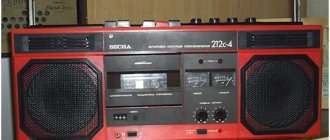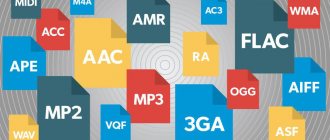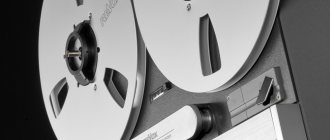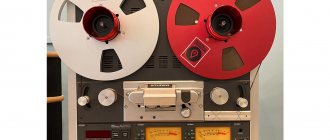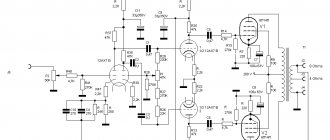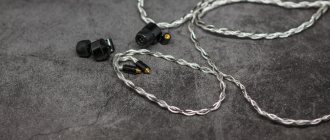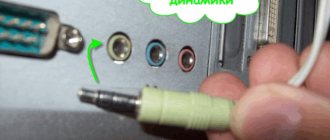For both young Padawan and veteran Jedi, there are several ways to enter the subject of reel-to-reel tape recorders for the first time or again: vintage, refurbishment, or "new construction".
At first, we'll assume that your main goal is to listen to music on already professionally recorded tapes, and perhaps occasionally make a home recording rather than a professional studio recording. In this case, there are two key things to focus on.
First, the range of characteristics and capabilities of the R2R machine: what sizes, speeds and tape formats it can reproduce. And secondly, if you are buying vintage - its condition and what you can do to bring it into working order.
If your options are limited for various reasons, but you still want to take the first step, try to find a domestic option in decent condition. This is the cheapest, but it will play, except for the official master copies. Many studios today offer commercial releases on 2-4 tracks at 19 speed, and old official editions of this format can be found on Internet sites. Clones with Revox A-700 represented by “Electronics” and “Olympus” are not very difficult to find. And if you need 38 speed, look for the semi-professional “Olympus - 701 - 702”.
By the way, our “Kulibins” also offer to convert household appliances to 38 speed, but I am not commenting on this here. Although sometimes “Electronics 004” was equipped with two types of drive engines. One domestic one had a thin capstan of approximately 7 mm and the second imported (a thick capstan of approximately 9 mm). The imported motor control board had the ability to switch speeds, and the board allowed you to configure and use three speeds: 9-19-38 cm/sec. There is another option from experts.
Electronics-004 after prevention (for 40,000 rubles)
Technically, this device can be adapted for AEG pancake 27 for a kilometer roll of SM 900. And if you also attach Revudur, native from Revox, to two tracks... that’s 500 dollars of investment. But even in those early years, I did not understand the deep meaning of “adapting” a professional analogue to a household 4-track player, and now too.
TEAC A-4010
The 1966 four-track TEAC A-4010 became one of the best-selling models from the Japanese company Tascam.
The tape recorder supported 7-inch reels and had an automatic rewind function - to indicate the end of the tape, you had to stick a piece of foil on it. In 1967, to increase sales, Tascam opened branded service centers in the United States. Their hopes were justified: in total, more than 200 thousand devices of this series were sold worldwide. Based on the A-4010, two more models were created: A-4010S and A-4010SL, and they were produced until 1972.
Users
TEAC A-4010S for ease of use and technical characteristics that exceeded those declared by the manufacturer. The reproduced frequency range at a tape speed of 7½ IPS varied from 35 to 19,000 Hz. After the success of the series, the brand continued to produce reel-to-reel tape recorders, and new models were released until 1992.
Total
Of the fully new developments, only Ballfinger can now be purchased.
The price range, depending on the modularity of the design, is from 11,000 to 32,000 euros.
Read more in the article “Reel Battle: Modern Ballfinger M063 H5 vs. Restored Studer A807.”
Unless you take into account that Kostas Metaxa has finally announced the presentation of his Metaxas TRX next year.
It’s true that the other day Analog Audio Design showed not a prototype, but a production model.
AAD TR-1000 launched into production
Akai GX-77
The GX-77 was produced from 1981 to 1985.
The tape recorder could play reels up to 7 inches in size and supported a new film format - EE (Extra Efficiency). This format was created to improve the sound of audio cassettes and used chromium dioxide. The GX-77 was compact compared to competitors' tape recorders: its dimensions were 440x244x227 mm. It also cost less than other new products of that time - $775. For comparison, the Akai GX-747 came out that same year and sold for $1,200. Thus, the GX-77 was a more affordable reel-to-reel tape recorder.
The model is also known for its appearance. For the design of the player in 1982, the creators were awarded the Japanese Good Design Award. Reviews praise the GX-77 for its ease of operation and good sound quality. Therefore, tape recorders were in demand, and on eBay you can still find for sale both the devices themselves and their components.
The GX-77 did not receive further development. In 1985, Akai completely ceased production of open-type reel-to-reel tape recorders.
Reel-to-reel tape recorders today
Reel-to-reel tape recorders made their presence felt again in the early 2010s. Sales of bobbin boxes have increased both on eBay and on vintage audio equipment trading sites. In many ways, this trend has been compared to the other major comeback in analog music: vinyl records.
The main advantage of reels is the maximum proximity of the recording to the original studio mix. According to fans of this medium, reel-to-reel recording most accurately conveys the original intent of the musicians. As Chris Mara, owner of a company that restores tape recorders, noted, reel-to-reel sound should especially appeal to jazz fans, since all the classic jazz compositions were recorded on reel-to-reel tapes.
Today, the trend for reel-to-reel tape recorders has been picked up by manufacturers who are creating new models of players based on previously produced devices. These include refurbished turntables from Mara Machines, systems from United Home Audio, and new models of tape recorders from Ballfinger. Revox and Metaxas also produce their reel-to-reel tape recorders. The latter promised to present their device this year.
This article has been read 14,600 times.
The article is included in the sections:
Interesting things about sound
"Mayak-001"
The first high-class tape recorder in the USSR was the Mayak-001-stereo.
It was created on the basis of the experimental Jupiter model in 1973. The devices were produced in Kyiv, where the first Soviet tape recorders under the Dnepr brand were produced in 1950. The plant produced only a thousand Mayaks a year, and therefore they were in short supply. Components for tape recorders were purchased abroad. "Mayak-001" played and recorded sound in mono and stereo formats. In 1974, this device received a gold medal at an international exhibition.
On its basis, in 1984 they created the Mayak-003-stereo tape recorder, which reproduced an extended frequency range. The next top-class model, “Mayak-005-stereo,” was released in a limited edition (about 20 pieces), and after that the plant produced only lower-level tape recorders.
"Electronics-004"
The Elektronika-004 tape recorder was assembled in 1983 at Fryazinsky, which until the end of the 70s produced only military products.
"Electronics-004" was a clone of the Swiss Revox tape recorders. At first it was not possible to completely replace foreign components. The plant management insisted that the engineers use K-50-6 capacitors made in Armenia, but their quality left much to be desired. As a result, a replacement was found for them - components began to be supplied from Dnepropetrovsk.
Later, the documentation for Elektronika-004 was transferred to factories in Saratov and Kyiv, and the model began to be produced at three enterprises.
With a tape speed of 19.05 cm/s, the operating range of “Electronics” was from 31.5 to 22000 Hz. Since 1984, based on this device, a multi-channel operational dispatch communications recorder called “Electronics-004D” was produced.
"Olympus-004-stereo"
The top-class tape recorder “Olympus-004-stereo” was released in 1985 and became one of the most technically advanced Soviet reel-to-reel players.
The device was produced at the Kirov Electric Machine-Building Plant named after. Lepse. The console came out at the height of the popularity of cassette recorders and was designed for buyers who value sound quality. Plant named after Lepse collaborated with the Fryazino enterprise, and therefore the basis of “Olympus” is the same Revox tape recorder. The characteristics of the device are similar to Elektronika-004. The main differences are the absence of automatic reverse and the presence of an electronic tape consumption meter.
Along with “Electronics”, “Olympas” are often remembered on audio equipment lovers’ forums as the best Soviet tape recorders. These models are still quite popular among enthusiasts.
Electronics TA 01-003
0
This tape recorder has been produced since 1979 by the Fryazinsky, and later by the Kirov Electrical Machine-Building Production Association named after Lepse. It had three motors and a high-quality tape transport mechanism with an automatic drive motor control system. There was also a device for electronic braking, plus a magnetic tape tension stabilization system and photoelectric auto-stop. The device also had a remote control and a built-in noise reduction system. The model weighed 27 kg.
6.
Revox A77
The Studer-Revox company produced primarily studio equipment. Musicians and bands such as Bob Dylan, The Beatles and Pink Floyd recorded on their tape recorders. Since 1960, the company began producing electronics for the home. The Revox A77, which was released in 1967, also became part of this series.
Photo /
Revox consider the A77 their most successful model. In total, the company sold 150 thousand of these tape recorders. The last, fourth, modification of the device was released in 1974 and continued to be produced until 1977. The tape recorder had many variations: with a different number of recording tracks and with different tape speeds.
In 1977, another successful model from Revox was released - the B77. Both models are reliable and durable, which is why they can still be found at auctions, where they are in demand.
Pioneer RT-909
The RT-909 was the last of Pioneer's reel-to-reel tape recorders.
Although the model was produced in Japan, it was not sold on the domestic market, and all RT-909s were exported (from 1978 to 1984). Player
as a device “that has every conceivable function.” It had film speed and pitch control systems, automatic rewind and auto-repeat. Tape recorders of this model continue to be purchased and restored.
History of reel-to-reel tape recorders
The history of reel-to-reel tape recorders dates back to 1878, when the American engineer Oberlin Smith met Thomas Edison's phonograph and began experimenting with the device. At some point he suggests using the phenomenon of magnetism to record sound.
According to his idea, the carrier could be a cotton thread into which particles of steel wire are woven. Smith publishes his ideas for improving the phonograph in the hope that someone will try to bring them to life, since he himself cannot find the time to do it all himself. And so it happened.
His work drew the attention of Danish engineer Valdemar Poulsen, who in 1898 received a patent for the technique of magnetic recording on steel wire. However, magnetic recording received practical application only in the 20s of the 20th century, when engineer Fritz Pfleumer proposed using a paper tape coated with iron oxide as a medium. Pfleymer was unable to obtain a patent for his idea due to Poulsen’s previous experiments, but his technology formed the basis of Magnetophone-K1.
It was created by the German electronics company AEG together with the chemical concern BASF, which produced the film for the device. The new device was presented to the public at an exhibition in 1935. And five years later, AEG tape recorders received an upgrade - engineer Walter Weber discovered that if you magnetize the film with alternating current, this improves the quality of sound recording. The solution was quickly put into practice.
Tape recorders became widespread around the world after World War II. In 1945, American Jack Mullin managed to find two “Tape recorders” and 50 reels of film at a German radio station in Bad Nauheim. Mullin brought his findings home, and after two years of experimentation, showed a prototype of his machine for commercial use at MGM Studios in Hollywood.
The technology demonstration was attended by singer Bing Crosby, who was interested in the engineer’s developments. Crosby invested in Ampex, where Mullin began developing a commercial version of the tape recorder. The result of the work was the Ampex Model 200 devices, which went on sale in 1948.
Another innovation in recording was born at Ampex. Since 1949, the company's engineers have been working on a system for multi-channel recording. They already had experience in creating similar devices for the film industry, so they proposed introducing it into serial tape recorders. The ideologist was the company manager Ross Snyder and developed the Sel-Sync selective synchronous recording system. The first recorder in the series was installed in the studio of the legendary guitar virtuoso Les Paul.
Tandberg TD 20A
The Norwegian company Tandberg has been involved in audio equipment since 1933.
Even John Kennedy used her recording devices. The TD 20A came out in 1977 and was one of the company's last reel-to-reel players. The device was positioned as equipment for the “advanced amateur.” One of the major innovations in the TD 20A was the ability to record on Metafine "metal" film. The working layer of such a magnetic tape contained pure metal powders instead of their oxides. The tape recorder supported reels up to 10 inches in size and two tape speeds with an optional third: 9.5 cm/s, 19.05 cm/s and 38.1 cm/s.
Later, two more models were released in the series: TD 20A-SE and TD 20-SES. The tape recorder remains in demand today - audio lovers call it one of the best reel-to-reel recorders.
Technics RS-1500U
0
The legendary Technics series of reel-to-reel tape recorders, which included many versions that differed in playback and recording speeds, built-in preamplifiers, color, and so on. What they had in common was the use of three powerful direct-drive motors, as well as a unique Isoloop tape drive mechanism - when passing through it, the tape rotates 180 degrees along its axis. Its original design ensured extremely stable belt tension. The first version of the Technics RS-1500U entered the market in 1976.
4.
Sony TC-880-2
The model was released in 1974.
It was a technically advanced tape recorder for its time, with tape speeds of 19 and 38 cm/s, and a frequency range of up to 40 kHz (at maximum speed). The device boasted accurate volume level indicators, a track synchronization tool, and the presence of phase compensation circuits. Nowadays the tape recorder is quite rare because it was too expensive.
In 1979, the price of the TC-880-2 was $2,495 ($8,660 in today's dollars). It's a shame because it's been called Sony's best reel-to-reel tape recorder. In our Telegram channel there is more interesting information about acoustics and audio gadgets:
Cinema on records Unusual portable A guide to built-in acoustics What is HD vinyl Unusual audio gadgets
Professional restoration of professional tape recorders
Now let’s take a look at the most professional and guaranteed representatives of this area.
Outside the ranking is the founder of the modern tape business - The Tape Project, USA.
Our heroes at The Tape Project began working on a thorough reconstruction of previously produced reel-to-reel machines. The most suitable for serial reconstruction of The Tape Project was considered quite affordable Japanese - Technics RS-1500US (speeds 7.5–15-ips, 2-track, ¼-inch playback). Such a device cost about $1,600 at the beginning of production and until 1986. Bottlehead Electronics was involved in the preparation of components and similar specification spare parts.
Technics RS-1500US after restoration at The Tape Project
1. Oak Tree Vintage - Colorado, USA
Today the company is offering the R2R Fostex E-2 for a very affordable, by industry standards, $1,750 and promises (once fully restored) a pristine condition 38-speed master machine—a professional reel-to-reel machine.
2. Revox-Online - Germany.
Revox-Online is the brainchild of Thomas Schröder, who still works for the official Revox-Studer service. The store offers officially restored company devices with original components with a full guarantee. Revox A-700 will cost 2,190 euros - and this is one of the best deals on the market. And if you go further into the forest - Studer A-810 on a trolley for 8,990 euros.
Revox A-700
But for real boys, there is also custom tailoring from 4,000 euros.
Revox B77 HS in custom design
3. SEPEA Audio - Slovakia.
The team of this company includes Peter Sedlak, widely known in narrow circles. A Studer B 67 Mk.II restored with original parts is offered for 1,950 euros. Compared to its little brother Revox A-700 from Revox Online, I would definitely choose the B 67. Tuned to RTM SM 911 tape and three speeds. Butterfly heads and digital tape counter.
Studer B 67 Mk.II
Their Studer A807 MK.II VU is already 5,000 euros. But here we already have the use of thick rolls of 1,100 meters, and the possibility of studio work. Butterfly heads.
Studer A-810 Revox Online
4.Mara Machines
This well-known American company Mara Machines offers a range of professional reel-to-reel tape recorders starting at $5,000, the most famous of which is the Mara Machines JH-110 - 1/4″ - a two-track machine that is housed in a huge floor-standing cabinet.
Note that the manufacturer allows the system to be upgraded to 1/2″ two-track or 1/2″ four-track formats. For another $500 you get activated 76 speed playback. And they are actively supported by the tape producer Analog Production.
True, the MARA Machine Transport (Playback Only) MCI JH110 HiFi 1/4″ 2 Track, made in a cabinet version, will cost $10,000.
But what is important is that they did not interrupt the process.
5.Uha-HQ
The Uha-HQ company from Maryland, USA offers a line of refurbished and deeply modernized Tascam reel-to-reel tape recorders with different functionality. Each has a solid list of options that can significantly change the cost and improve the sound. The base Phase 10 is priced at $12,500, and the company's pride is a pure Class A preamplifier designed with the shortest possible signal paths.
Their design delights put me, as an architect, in a state of cognitive dissonance, but anyone can offend an artist.
The top-of-the-line ULTIMA4 Audiophile Tape Deck already costs $24,500, but I'd go with that kind of money again for a new Ballfinger or an officially restored Studer.
True, the Ultima A4 has one power system that costs 6,500.
And in order to fly close to sunny America, let’s look at this:
6. Sonorus Audio - USA.
Sonorus audio ATR-10
Does the picture above remind you of anything? That's right - Revox PR99!!!
But this is not a full-fledged professional car, but a transport-reproducer - and that’s all... The basic “high-speed” for $19,500, and all the options plus another four thousand.
Mother! I went again with that kind of money for a new Ballfinger or an officially restored Studer - even enough for a pair of A-807 M IIs. But seriously, in addition to the improved path and tape system, Sonorus has the main “zest” - a tube and fully balanced built-in pre-amplifier.
To sum up today, the choice of Revox Online and Sepea Audio is highly recommended.
But there is the most budget-friendly and good option for purchasing and restoring a professional device - the Hungarian STM-310 Mechlabor.
You can find thousands from 60 rubles in working condition. It was produced until the end of the 80s, and many of them were imported into the USSR.
But the smoke of the fatherland is sweet to us - and therefore:
7. Next Sound - Moscow, Russia.
Compatriots are announced as producing audio components and restoring vintage models.
37th Studers is a favorite topic. By the way, there is also a half-inch kit of our own design. Prices are negotiable and quality is high.
Let's convert your Studer C37 to 1/2″ stereo tape
This is what the “magnificent seven” looks like today.
But we cannot fail to mention Flux Magnetics from the USA, because they are one of the main manufacturers of modern tape heads.
It is an advanced company that designs and manufactures analog audio heads for the recording industry. Custom head types for Ampex are manufactured and tested to customer specifications, and custom head types for OEM equipment are designed to meet or exceed OEM specifications.
Flux Magnetics has developed an "ME" (Mastering Extended Response) series of 2-channel 1/2" 30 ips heads and an "MS" (Mastering Standard) series of recording and playback heads manufactured to OEM specifications at 15 ips.
But that’s not all - there are also kit kit developers. “Enter the DYA audiophile community and discover how much better your tract can play when you invest in great design and premium components,” says The Bottleheads of Brite Star Lane, Poulsbo, WA, USA.
Your Technics RS or Otari can be tweaked with a relatively inexpensive kit from The Bottleheads.
Otari MX-5050 bill 2-3 tape path modification kit
Already the major league - Ampex ATR Service, USA.
Ampex ATR-100 and others in the series are probably the most advanced tape recorder in the world in terms of tape mechanism and sound electronics. And then and now so much music is written on them.
For your machine, ATR Services' complete restoration package includes complete disassembly and reassembly of the machine, power supply rebuild, motor rebuild, complete wiring inspection, and replacement of the capstain assembly with a new precision rubber part. The top panel voltage regulator and MDA output transistors are also replaced. We also update PCBs to improve reliability. Next, we paint the entire cabinet assembly to OEM specifications, re-wrap the OEM vinyl, and replace the control box trim.
Let's try to summarize some results:
From 9th to 19th speed you can limit yourself to purchasing and repairing domestic and foreign household appliances. But here, too, I would advise looking for something like Revox B77 MK I 4 Track 3 3/4 & 7 1/2 - 600-700 euros and getting it checked by a specialist. Maybe that's enough? Just a quarter of an inch on two tracks at 38 speed is 80,000,000 magnetic particles flying through the track per second. Eight inches on four tracks - two in one direction and 19 cm / sec - four times worse? Well, twice by ear for sure.
The process becomes more complicated if you decide to collect commercial copies of the masters and need 2 tracks on the 38th. In fact, in most cases you need a well-functioning tape player, and all the studio options are not needed - and why pay for them?
My advice: look for something similar.
We purchase Revox B77 HS - 19th and 38th speed and two tracks - from 700 to 1,000 euros in tolerable condition and then go to a specialist for anamnesis. It’s even better to write to Thomas Schröder, then put your Revox in the trunk - and by car to the address: Schottjer Straße 30 Upgant-Schott 26529 Germany.
There is an element of subjectivity in my assessments, but this is why I am for the Revox B77 HS: this machine was produced at Willie Studer GMBH and was designed by Studer himself for small studios, and, what is important, for radio stations, that is, it is designed for active use and has an indestructible safety margin. The resulting cost/quality ratio is optimal. The later PR99 and C270 are also good, but they are more expensive, a lot of unnecessary things from the point of view of home use, but the sound is the same level. Well, in order to get the sound of the master machines from Studer, the level of the entire system needs to be appropriate.
All this if there is no such person nearby - an interview with the restorer of reel-to-reel tape recorders Andrei Shishlo.
But if you've started a collection using tapes like RTM SM 900-911, and you need to put rolls on a tape machine at AEG 1,100 meters, then you need a Studer A-807 - no lower. Next, I simply quote Andrei Shishlo:
“The next point: if this is a studio device, then there may be things that are important from the point of view of studio operation, but can have a negative impact on the sound. There is a good example - the Revox line, B77 household and 99, which, in fact, was made from 77. You can look at the recommendations of The Tape Project - this is a well-known company in the circles of both music lovers and audiophiles; they were engaged in restoring devices and gave advice to those who bought tapes from them. The studio 99 differs from the 77 in that it has an additional balanced output, so their recommendation was simply not to use this output. Because he's redundant. Yes, it was simply needed from the point of view of operation in the studio - so that a long cable could be connected. But if you record the sound before this balanced output, it’s actually twice as good. This is the situation."
